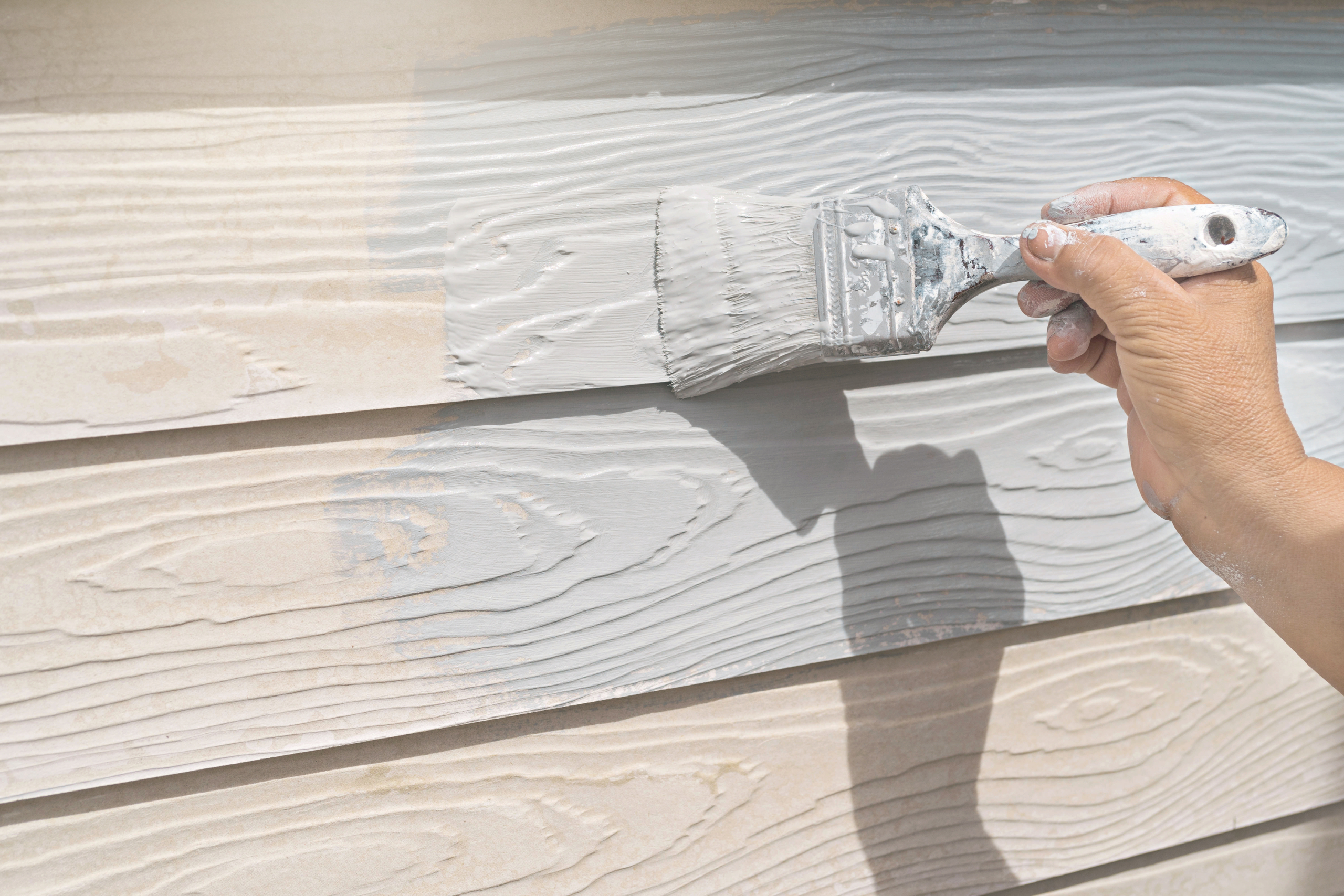Many homeowners install vinyl as a maintenance-free siding option that doesn’t require much upkeep. In fact, most install it so they don’t have to paint at all. The color itself is mixed into the product, and it often comes with a 30-year product guarantee. The problem — what if you grow tired of the color or move into a home and want a new look? Is painting vinyl siding an option? The answer depends on a few things.
Warranty

Before painting, it’s wise to do some digging and research more about your siding. The first thing you will want to check on is if a warranty is still in play. If it is, it doesn’t necessary mean that you can’t paint, it may just mean you need to follow the manufacturer’s guidelines on the type and color of paint you should use.
Is it worth it?
In time, the protective coating on siding will wear, and the product will lose some of its original luster. The sun beating down and other weathering will result in fading. Grime will build up, and power washing only works to a certain extent. At some point, you will need to paint or replace it.
The first thing you will want to think about is how long you plan to be in the home? Once painted, the siding will require repainting every few years. Just like any other paint, with wear and tear, it will begin to peel over time.
In the long run, if you are comfortable committing to a color and plan to be in the home for the long term, you may be better off replacing the siding. In the end, this may save you money and time. As an investment, new siding will generally give you a better return than painting older siding.
Siding condition
Another consideration is the age of the siding. If the product is old and in bad shape, painting will only go so far. It won’t change the siding itself. Buckles, gaps, dents, and holes are all indications that the siding is reaching its term. Why spend money on something that may have to be updated soon? If there is a chance siding may need to be replaced within the next few years, it may not make sense to go through the hassle of painting it.
Seam color
Siding has slightly overlapping seams. This allows for the expansion and contraction of the material in different weather. Essentially what this means is that in extremely cold weather there is a chance you may have a slight gap in the color at the seams. If you paint and choose a very different color, the contrast may stand out.
Budget

The last thing to consider is budget. Brand-new siding is a long-term option, but it is expensive. If you want a refresh but just don’t have the funds to purchase new siding, painting the existing may be a good option. It will give you a whole new look and be much easier on your wallet.
Should you prime before painting?
The age-old question of whether or not to prime depends on the state of the siding. Some professionals recommend priming no matter what. First and foremost, it is important that the siding is thoroughly cleaned using a power washer. Next, you need to examine the condition of it. If it shows any signs of pitting or severe weathering, it is best to prime. Doing so will fill in any inconsistencies and give an adequate base for the paint. If the siding is in good condition, your best bet is to ask what the particular paint manufacturer suggests.
Color and paint selection
There will be some limitations on the color you can use. All siding is designed with a specific amount of heat absorption. Since dark colors absorb more heat than light, make sure you do not select a color that is darker than the original siding.
Paint manufacturers offer paint specifically made for vinyl siding. These products are a particular blend of urethane and acrylic resins, which have excellent adhesion and flexibility. It is wise to research and ask your paint supplier for recommendations on colors that are best and won’t absorb as much heat.
Meanwhile, if you want to learn about the basics of painting cedar siding, read on further!



